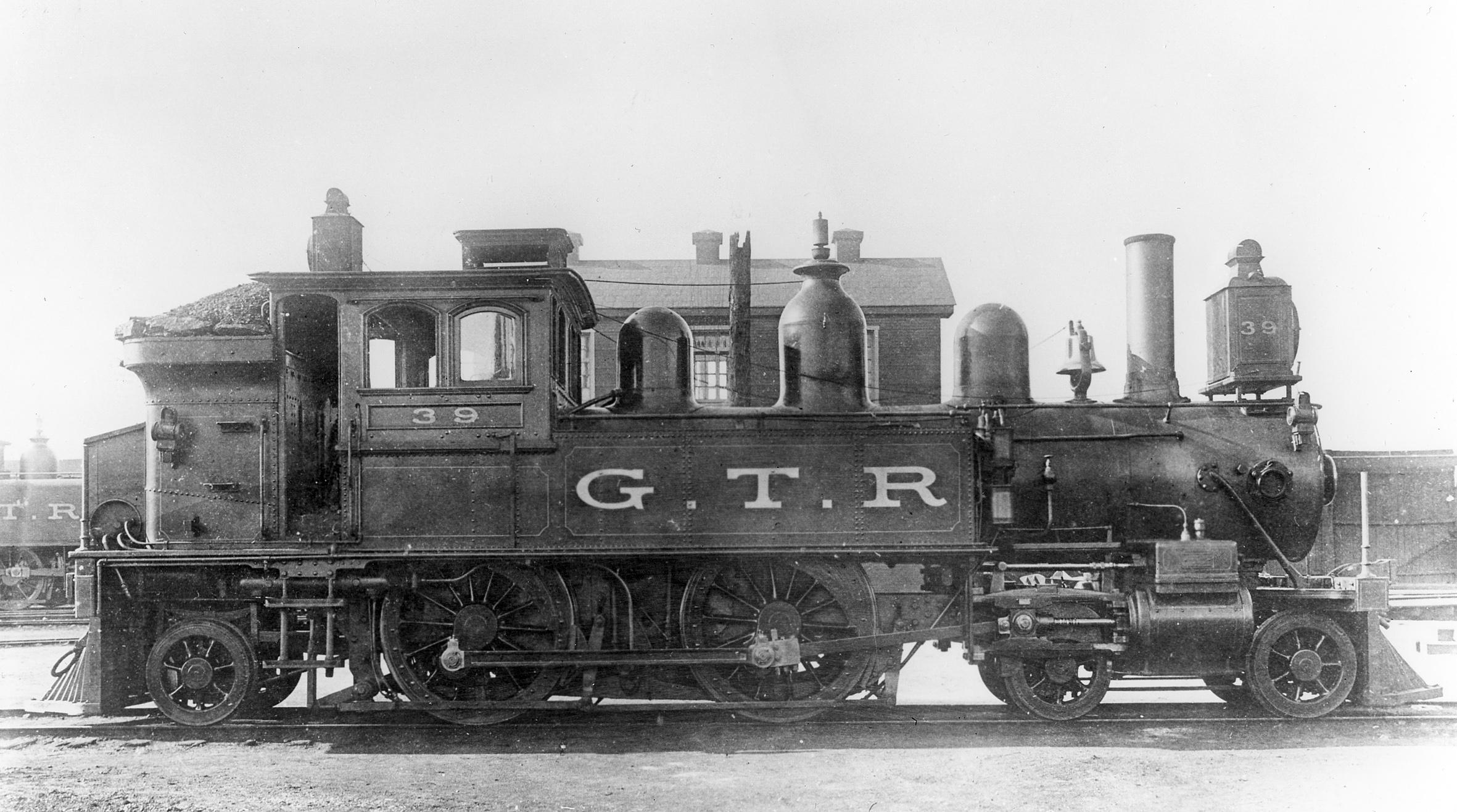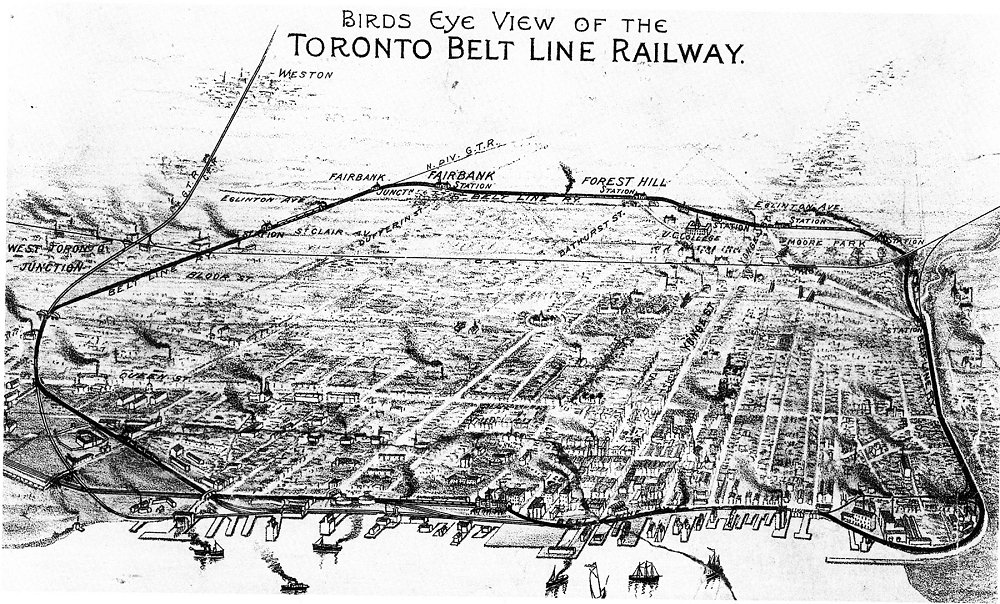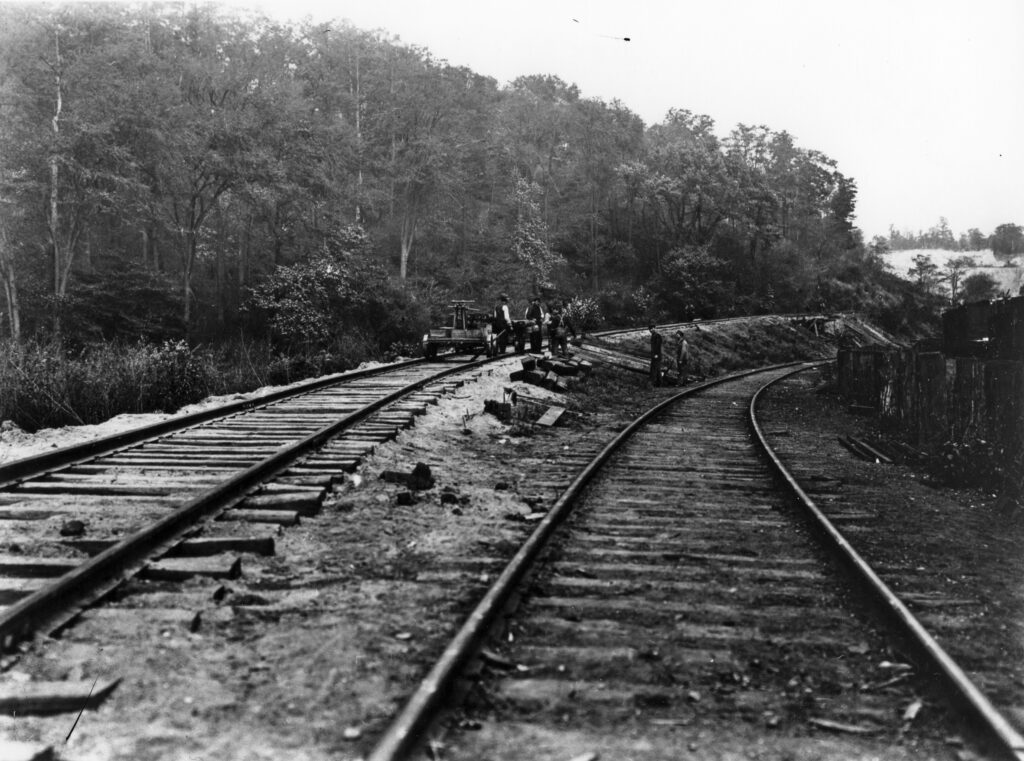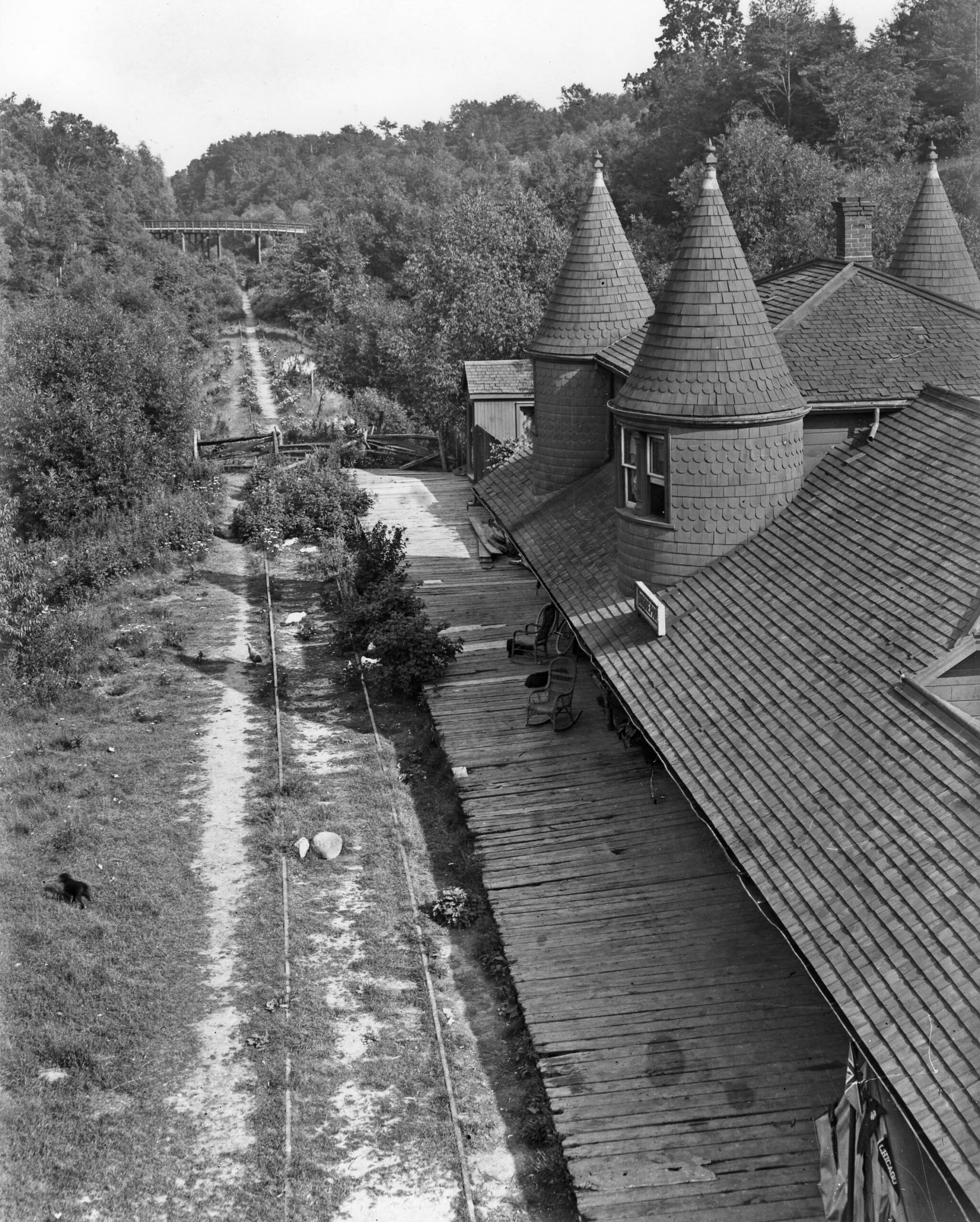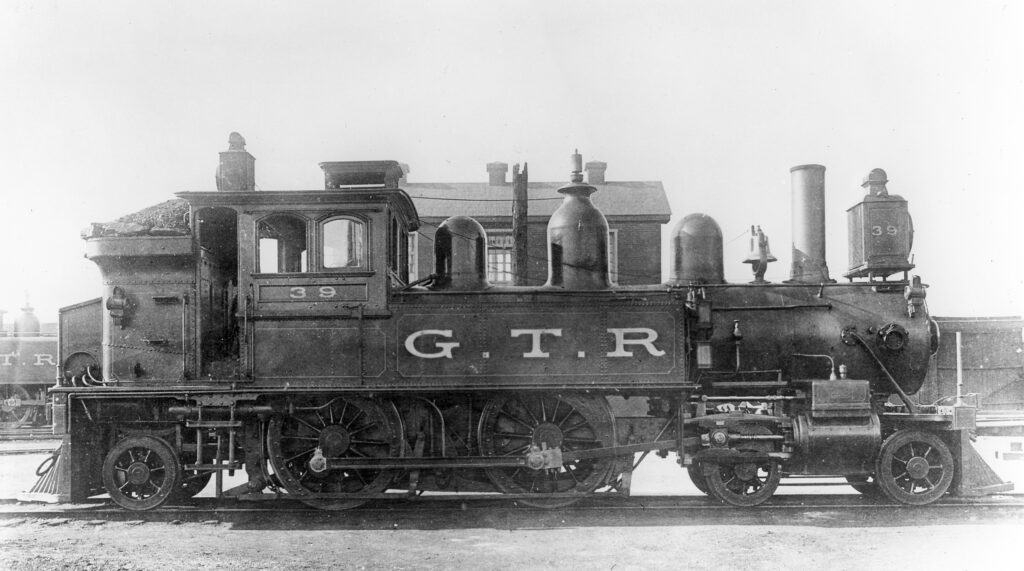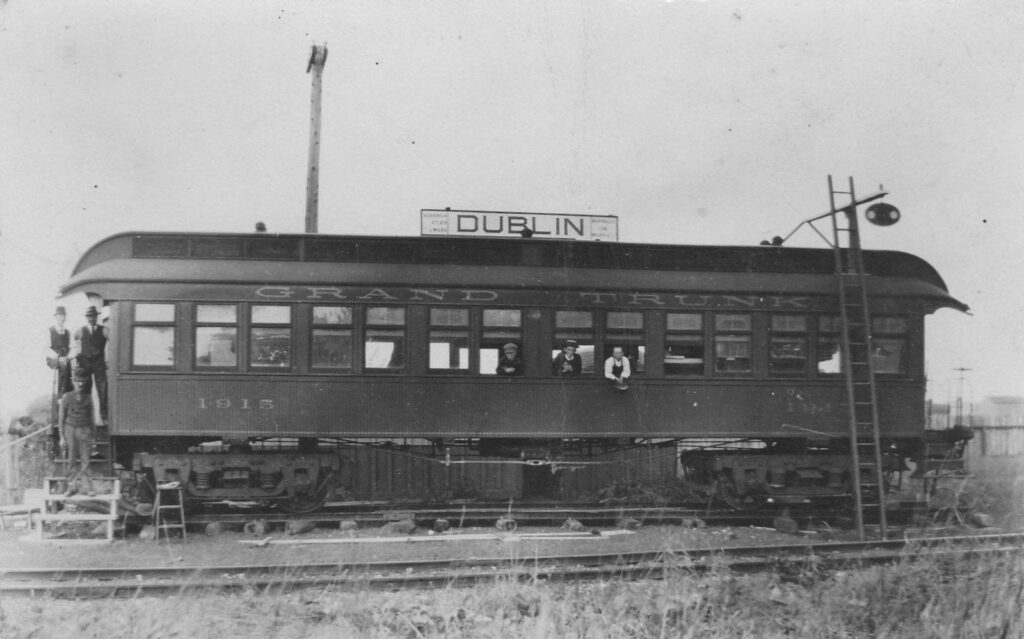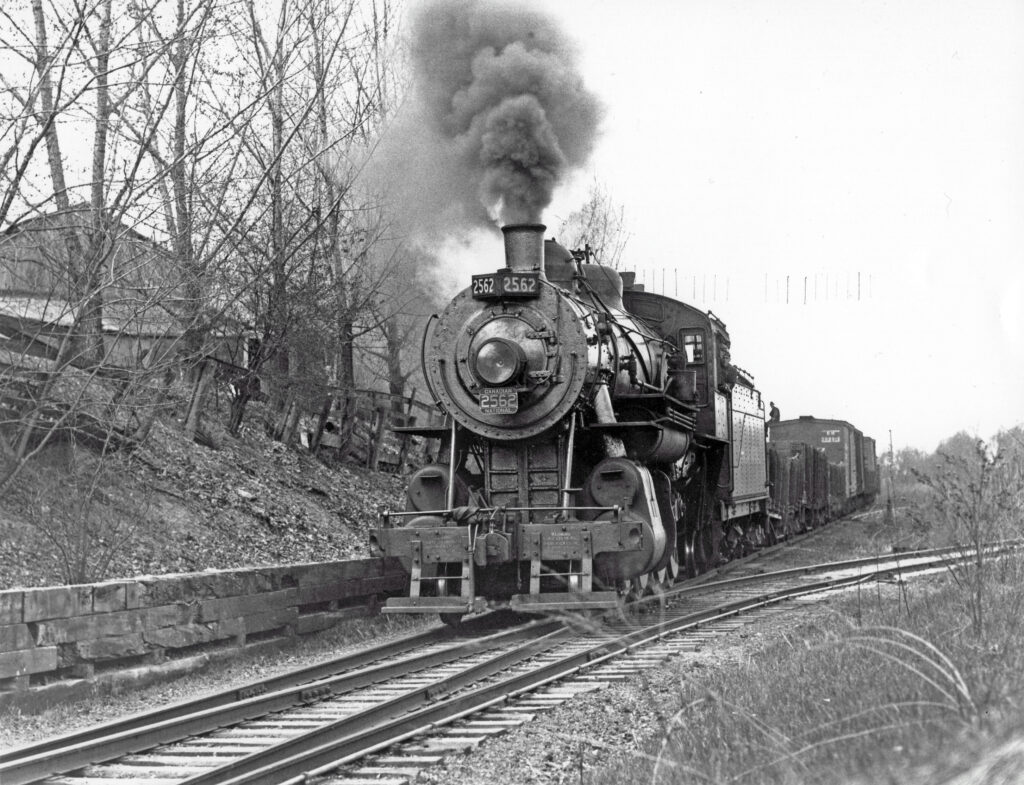The Toronto Belt Line was a visionary railway commuter network that began running trains 75 years before GO Transit and shut down after only two years of operation. There are no known photographs of any of its trains, yet thousands of Torontonians enjoy walking, jogging or biking along its right-of-way, over a century after the Belt Line’s untimely demise.
In 1889, a group of prominent businessmen formed the Toronto Belt Land Corporation to develop large parcels of land north and west of the city into new residential neighbourhoods that were located beyond the reach of the city’s streetcar lines. The developers proposed to link these suburbs to downtown Toronto with a new Belt Line steam railway that would encircle the entire city.
As the project evolved, it was decided to build two separate loops of track, one north of the city and one to the west. The Yonge St. Loop circled around the north end of the city via the Don Valley, Mt. Pleasant Cemetery and the Grand Trunk tracks in the west near Caledonia Avenue.
The western or Humber Loop also utilized Grand Trunk tracks west out of Union Station as far as Swansea, where it headed north, paralleling the Humber Valley to Lambton and looped east towards West Toronto Junction. Like the eastern loop, it then followed Grand Trunk tracks through Parkdale and back into Union Station.
Construction on the Belt Line began in 1890, however the anticipated land boom soon collapsed and the Belt Line Company went bankrupt in early 1892 before the line was finished. Construction was completed by the Grand Trunk Railway and service began on July 30, 1892 with six trains a day on each loop.
During the first few months of operation, thousands of Torontonians enjoyed the traveling through the countryside and returning to the city along a circular route. However, the novelty soon wore off and the Belt Line’s 25-cent fare (about $5 in today’s money) did not encourage the regular commuter traffic necessary to sustain the operation. As well, the anticipated land boom in the suburbs was halted by a severe economic depression and most of the residential lots went unsold.
By July 1894, there were only three trains a day on each of the TBL’s loops. All Belt Line passenger service ended on November 17, 1894, after only 27 months of operation. The line from Mt. Pleasant Cemetery to Rosedale was then abandoned.
In the decades after the Belt Line ended operations, economic conditions in Toronto improved and the subdivisions through which the Belt Line traveled became some of Toronto’s most desirable neighbourhoods, including Swansea, Moore Park, Deer Park and Forest Hill. These new neighbourhoods required fuel and building supplies, both commodities that were transported almost exclusively by rail. In 1910, the Grand Trunk rebuilt the northern portion of the Yonge St. Loop for freight service.
Trains ran along this line until the 1970s when the W.R. Allen Rd. was opened and ended rail service east of Marlee Avenue. CN sold the property to the city in 1988 and its conversion to a recreational path began. The deteriorated bridge over Yonge St. was refurbished in 1993 and the trail was named the Kay Gardner Belt Line Trail, after a city councillor who had championed the project. The trail is now one of Toronto’s most popular recreational paths, used by hikers, joggers and bicyclists.
Written by Derek Boles, TRHA Historian, who retains copyright on the content. These pages are not to be reproduced without written permission.


